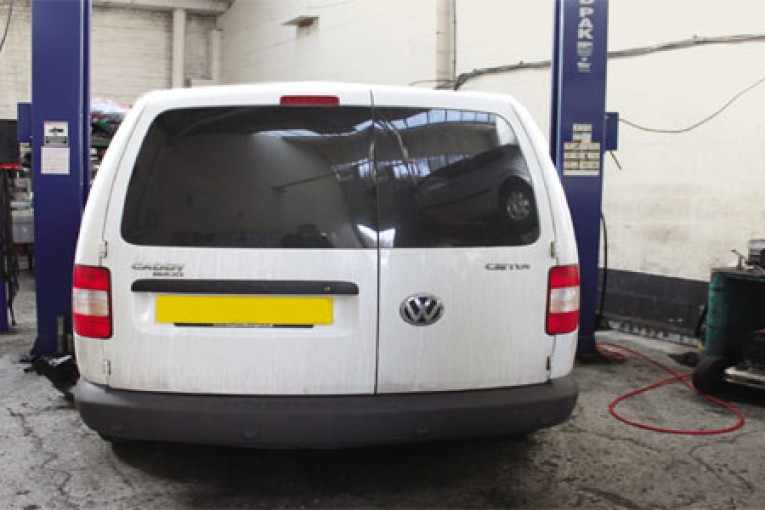
The Volkswagen Caddy has been with us for many years and, thanks to its excellent levels of refinement and efficiency, it’s now a common choice for fleet managers and van drivers. As the average mileage of these vehicles increases we are starting to see more and more entering aftermarket workshops.
A clutch replacement on the Caddy is really straightforward and with the guidance of the LuK ‘clutch clinic’ the whole process will become even easier. Nothing out of the ordinary is needed to complete the job; the only special tools required are an engine cradle, a transmission jack and a long axle stand.
A two-post ramp was used in this example however a four-post ramp could also be used. For safety reasons its considered best practice to disconnect the battery earth lead before commencing work. If the vehicle has alloy wheels it may be fitted with antitheft wheel bolts, so make sure you have the key before you start.
Lift out the airbox assembly
Open the bonnet, remove both battery terminals and disconnect the Mass Air Flow (MAF) sensor. Disconnect the small pipe attached to the airbox and release the large circlip securing the inlet pipe to the manifold. Remove the inlet pipe and undo the allen key bolt securing the airbox to the battery tray. Unclip and remove the plastic pipe connecting the airbox to the inlet on the slam panel then lift out the whole airbox assembly by giving it a sharp tug upwards.
Undo the clamp securing the battery and lift it out. Undo the three bolts securing the battery tray and remove it, taking care to move the electrical wiring out of the way. Undo the three bolts securing the gear cable bracket to the gearbox and remove the nut securing the linkage mechanism to the gearbox.
Carefully remove the plastic clip from the selector and slide the whole assembly off the gearbox and stow it to one side. Its worth noting that the linkage does have a master spline (Fig 1 below) and can only be fitted in a certain position.

(Fig 1)
Clamp the slave cylinder pipe and remove the bracket securing it to the gearbox. Remove the support brace (Fig 2 below) bolted to the gearbox mounting.
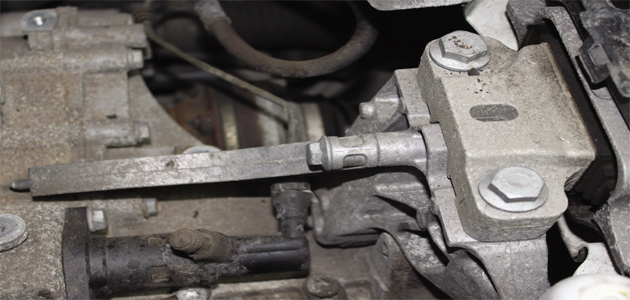
(Fig 2)
Disconnect the slave cylinder (Fig 3 below). When removing the pipe from the slave make sure the rubber seal is still attached to the end of the pipe. If not, it will need to be located and refitted to the pipe as the seal can kink during fitment, causing the pipe to leak.
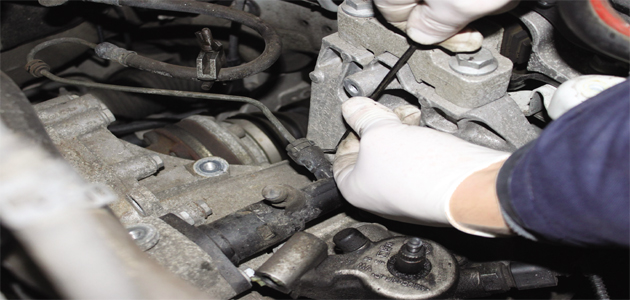
(Fig 3)
Unbolt the earth lead from the starter and disconnect the reverse light switch (Fig 4 below) and the connector fitted to the rear of the starter.
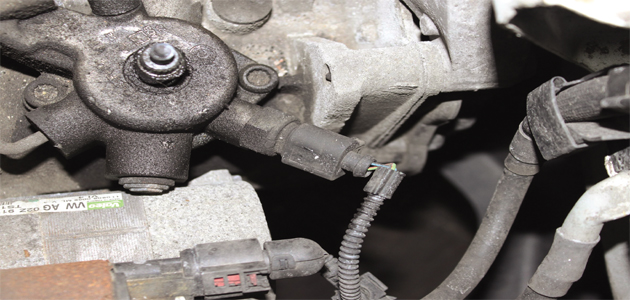
(Fig 4)
Unclip the plastic cover and unbolt the power supply lead (Fig 5 below) to the starter.
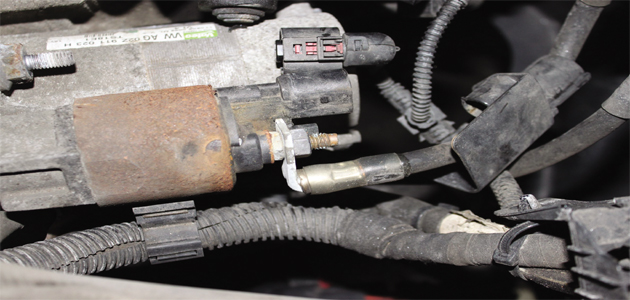
(Fig 5)
Remove the top starter motor bolt and the upper bell-housing bolts. Support the engine using the cradle and remove the gearbox support mounting.
Lower the gearbox
Raise the vehicle and remove the nearside wheel and hub bolt. Remove the complete nearside wheel arch liner and unbolt the gearbox support bracket. Unbolt the bracket attached to the lower starter motor bolt (Fig 6 below), the lower bolt and the starter motor.
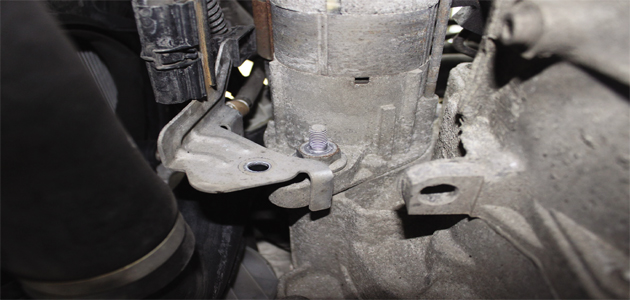
(Fig 6)
Undo the drive shaft bolts on the long and short shafts (Fig 7 below) and remove the short shaft (the lower arm does not need to be released).
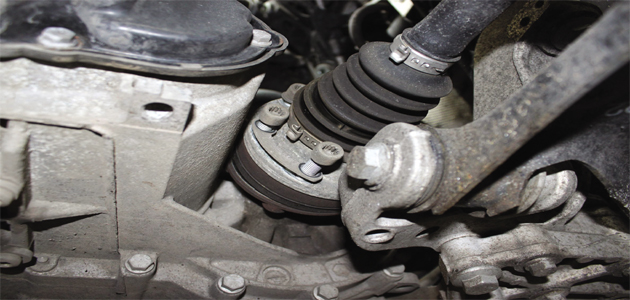
(Fig 7)
Remove the lower bell-housing bolts and, with support, lower the gearbox to the floor. With the clutch removed, check the dual mass flywheel (DMF) for signs of heat stress and ev idence of grease loss. The DMF should also be tested for freeplay and rock between the primary and secondary masses – LuK tool number 400 0080 10 is specifically designed for this purpose on all LuK manufactured DMFs.
Full instructions and tolerance data for all LuK DMFs are contained on a CDwhich comes with this special tool. Clean the first motion shaft splines and any debris from the bell housing (especially important when a release bearing has failed).
Put a small dab of high melting point grease (not a copper-based product) on the first motion shaft splines and make sure the new driven plate slides freely back and forth. This not only spreads the grease evenly bu t also makes sure you have the correct kit. Wipe any ex cess grease off the shaft and driven plate hub. Using a universal alignment tool and checking the driven plate is the correct way round (note “Getriebe Seite” is German for “Gearbox Side”) the clutch can be bolted to the flywheel evenly and sequentially.
Before fitting the gearbox make sure the locating dowels are in place and not damaged. Refit any that have become dislodged and refit the gearbox. Make sure the gearbox bell housing bolts are secured before lowering the jack. Refitting is the reverse of the removal.









